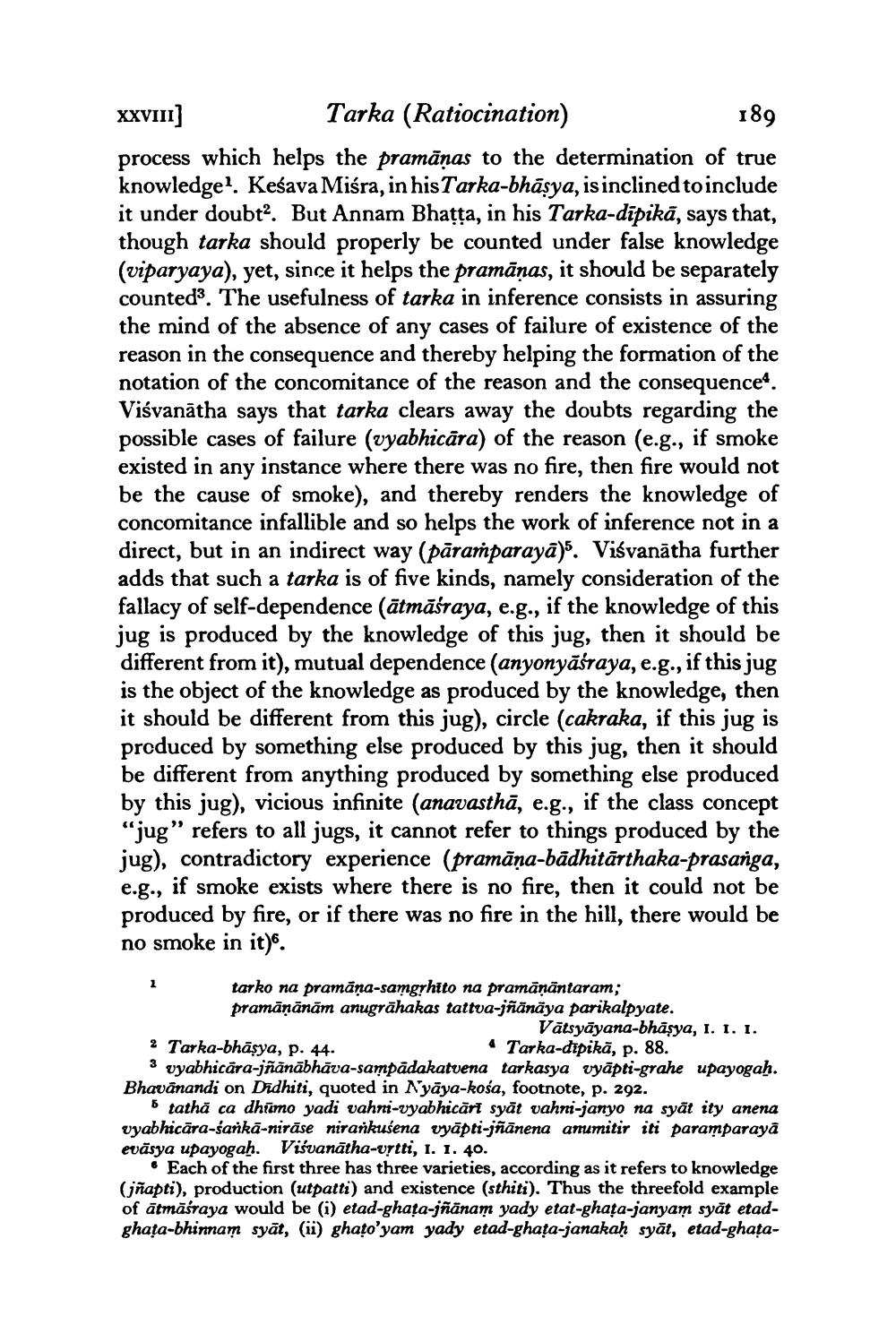________________
XXVIII) Tarka (Ratiocination)
189 process which helps the pramānas to the determination of true knowledge. Keśava Miśra, in his Tarka-bhāsya, isinclined to include it under doubt. But Annam Bhatta, in his Tarka-dipikā, says that, though tarka should properly be counted under false knowledge (viparyaya), yet, since it helps the pramānas, it should be separately counted. The usefulness of tarka in inference consists in assuring the mind of the absence of any cases of failure of existence of the reason in the consequence and thereby helping the formation of the notation of the concomitance of the reason and the consequence4. Viśvanātha says that tarka clears away the doubts regarding the possible cases of failure (vyabhicāra) of the reason (e.g., if smoke existed in any instance where there was no fire, then fire would not be the cause of smoke), and thereby renders the knowledge of concomitance infallible and so helps the work of inference not in a direct, but in an indirect way (pāramparayā). Viśvanātha further adds that such a tarka is of five kinds, namely consideration of the fallacy of self-dependence (ātmāšraya, e.g., if the knowledge of this jug is produced by the knowledge of this jug, then it should be different from it), mutual dependence (anyonyāšraya, e.g., if this jug is the object of the knowledge as produced by the knowledge, then it should be different from this jug), circle (cakraka, if this jug is produced by something else produced by this jug, then it should be different from anything produced by something else produced by this jug), vicious infinite (anavasthā, e.g., if the class concept "jug” refers to all jugs, it cannot refer to things produced by the jug), contradictory experience (pramāņa-bādhitärthaka-prasanga, e.g., if smoke exists where there is no fire, then it could not be produced by fire, or if there was no fire in the hill, there would be no smoke in it).
tarko na pramāna-samgrhito na pramāṇāntaram; pramānānām anugrāhakas tattva-jñänäya parikalpyate.
Vätsyāyana-bhāsya, 1. 1. I. 2 Tarka-bhāsya, p. 44.
Tarka-dipikā, p. 88. 3 vyabhicāra-jñānābhāva-sampadakatuena tarkasya vyāpti-grahe upayogah. Bhavānandi on Didhiti, quoted in Nyāya-kośa, footnote, p. 292.
6 tathā ca dhimo yadi vahni-vyabhicārt syāt vahni-janyo na syāt ity anena vyabhicāra-sarkā-nirāse nirankušena vyāpti-jñānena amumitir iti paramparaya eväsya upayogah. Visvanātha-urtti, . 1. 40.
• Each of the first three has three varieties, according as it refers to knowledge (jñapti), production (utpatti) and existence (sthiti). Thus the threefold example of ātmāśraya would be (i) etad-ghata-jñānam yady etat-ghata-janyam syāt etadghata-bhinnam syāt, (i) ghato'yam yady etad-ghata-janakah syāt, etad-ghata




